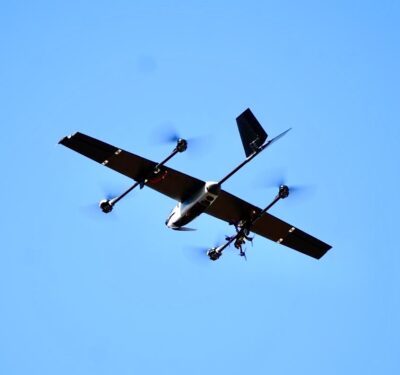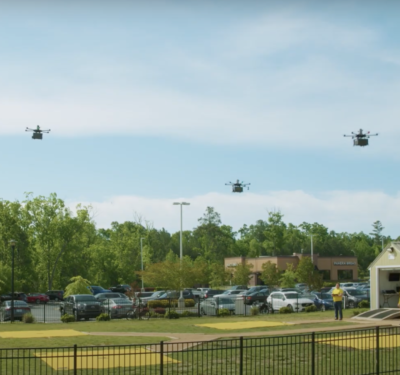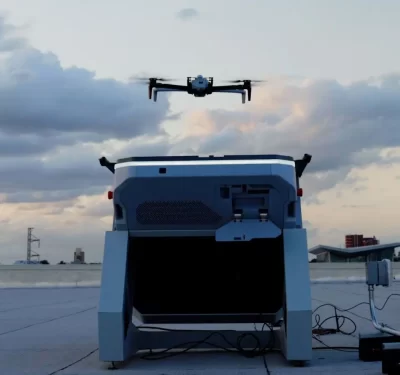Advanced Aircraft Company (AAC), a developer of long-endurance hybrid-electric unmanned aircraft systems designed for a wide range of commercial, defense and public safety applications, has been selected by the United States Air Force (USAF) AFWERX program for the development of Small Unmanned Aerial Systems (SUAS) as part of the Small Business Innovation Research (SBIR) program Open Topics 21.2/B Cohort.
AFWERX, in partnership with the Air Force Research Lab (AFRL) and the National Security Innovation Network (NSIN), developed the SBIR Open Topics to increase the efficiency, effectiveness, and transition rate of the SBIR program. Through a competitive awards-based program, the SBIR program enables small businesses to explore their technological potential and provides the incentive to profit from its commercialization.
AAC’s highly versatile HAMR incorporates a multi-rotor configuration with a hybrid fuel-electric propulsion system for extended endurance and multiple, simultaneous payload capabilities.
The HAMR UAS can be optimized for a wide range of defense applications and mission profiles, including long-endurance tactical ISR, perimeter security, search and rescue, and medical supply delivery missions. HAMR UAS also serves as a force multiplier, providing a significant increase in ISR capabilities relative to DoD’s incumbent tactical ISR UAS to better protect our warfighters.
“We are thrilled to be part of the SBIR program Open Topics 21.2/B Cohort and look forward to a successful collaboration with our stakeholders,” said Bill Fredericks, Founder of AAC. “Our HAMR UAVs high-performance and efficient propulsion system, rugged aerodynamic airframe, and ease of serviceability in the field make it ideally suited for demanding military operations in the most inhospitable environments.”
The HAMR utilizes a series hybrid fuel-electric propulsion system that incorporates an electronic fuel injected and computer-controlled 35cc single-cylinder piston engine driving an integrated generator producing up to 2000W to power six independent brushless DC electric motors and a backup battery.
HAMR’s capabilities bridge the gap between today’s Group 1 and Group 2 UAS with a flight endurance of up to 3.5 hours – six times longer than a conventional battery-powered multirotor aircraft. Multiple redundant systems, remote in-flight engine starting, and onboard batteries ensure the aircraft can operate with a high margin of safety. In the event of an engine failure or an electric motor failure, the craft can abort, maneuver away, and land safely without further incident.
The systems employ line replaceable units (LRUs), ensuring rapid in the field servicing with minimal training, ensuring minimum operational downtime. A continuous development program lengthens aircraft service life and increases its capabilities as new technologies are integrated over time.
The HAMR’s dual payload bays allow for multiple sensors/devices to be carried simultaneously or for increased fuel capacity. An open modular architecture allows for rapid payload reconfiguration depending on application and mission. Operators can choose from a range of commercially available optical or infrared cameras and LiDAR systems. HAMR can carry standard Group 2 payloads for defense applications, including electro-optical (EO), infrared (IR), laser, and communications systems.
Additionally, the HAMR is highly portable and can be launched within minutes without the need for ground support infrastructure. The system can be disassembled and stored in a single case and easily transported in a conventional civilian or small military vehicle.






